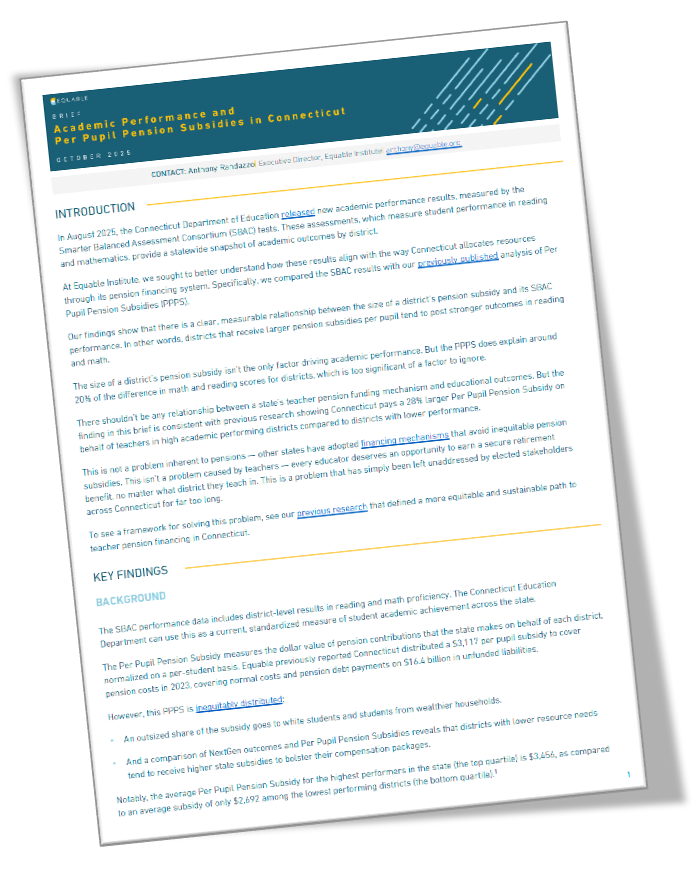Equable Institute released a new brief showing that differences in state support for teacher pension costs in Connecticut are correlated with differences in student performance across district lines. Districts that receive larger pension subsidies per pupil tend to post stronger outcomes in reading and math, the analysis finds.
In past research, Equable has shown how the state pays an inequitable “Per Pupil Pension Subsidy,” marking the dollar value of pension contributions that the state makes on behalf of each district, normalized on a per-student basis. This is because districts with higher-paid, longer-tenured teachers carry a larger share of the Connecticut Teachers’ Retirement System’s liabilities, which are borne entirely by the state, without any municipal contribution.
The result is that the very districts that are able to pay teachers most and retain them longest also receive the most support, on a per pupil basis, to fund teacher retirement. Previous reporting has identified that this system of financing measurably exacerbates already existing inequities: an outsized portion of the state’s subsidy goes to white students, students from wealthier households, and students in higher performing districts.
This newest brief adds that the inequitable allocations are also correlated with unequal student performance outcomes on the Smarter Balanced Assessment, with the most recent data released in August.
“Connecticut’s latest SBAC results confirm a troubling reality: the state’s pension financing policies are not neutral,” observed Anthony Randazzo, Executive Director of Equable Institute. “There shouldn’t be any relationship between a mechanism for financing teacher pensions and educational outcomes for students. But this analysis shows that by paying for 100% of teacher retirement costs without accounting for these costs in the state’s school finance formula, the state is effectively reinforcing existing inequities in educational outcomes.”
“Policymakers have repeatedly raised the alarm about educational resources not keeping up with student need, and this concerning data is a reminder to lawmakers to take swift action,” Randazzo added. “Addressing the Per-Pupil Pension Subsidy is an imperative for Connecticut, both as a matter of sustainability and in order to address entrenched disparities.”


